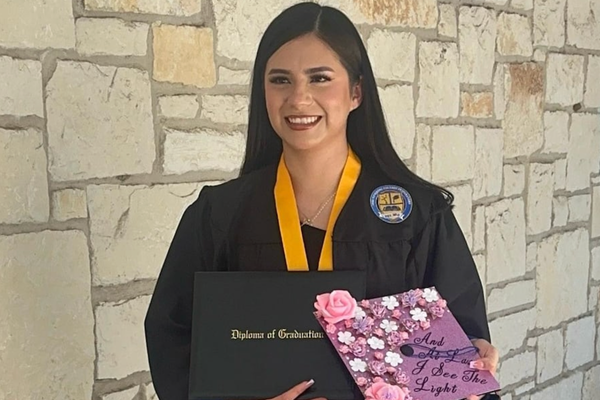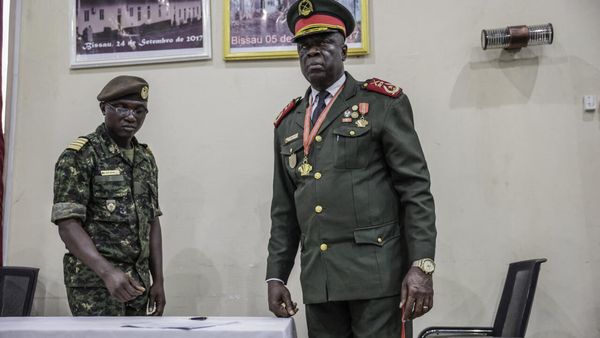
With just two weeks left in the federal election campaign, the Coalition and Labor have promised billions of dollars in local funding projects as they battle for key marginal electorates. But some neighbouring safe seats have so far received no funding promises at all.
An analysis of data from Guardian Australia’s pork-o-meter lays bare the seats being targeted by the major parties, with commitments to pour billions into one side of the electoral fence while neglecting the other.
By 2 May, about halfway through the election campaign, $8.4bn had been promised for local projects, with $7bn coming from the Coalition and $1.4bn from Labor.
Analysing the election promises by location, it is clear some seats have missed out entirely.
Werriwa v Lindsay
Western Sydney is considered a key election battleground, but the contrast in promises for the seats of Werriwa versus Lindsay shows there are particular pockets of the west that the Coalition and Labor are focused on.
The Liberal party seized Lindsay from Labor at the 2019 election, holding it by a margin of 5%.
Desperate for first-time MP Melissa McIntosh to retain the seat, the Coalition have so far promised about $247m in funding for local projects within Lindsay, including $232.5m towards upgrading Mulgoa Road, $12m to upgrade a commuter car park at Kingswood Station, $2m for a new assistance dog training facility in Orchard Hills, and $590,000 towards upgrading Bennett Park.

Meanwhile, Labor has so far vowed to spend $8.5m in Lindsay if it wins government, which it will spend upgrading Cook Park.
On its south-eastern flank, on the other side of Elizabeth Drive, is Werriwa, held by Labor’s Anne Stanley. While she holds the seats by a relatively slim margin of 5.5%, Werriwa has never left Labor hands and is not considered to be in play this election.
The Coalition has not announced any projects or funding in Werriwa, while Labor have announced a Headspace centre for Edmonson Park without pledging a specific amount.
Scullin v McEwen
In Melbourne’s north the electorate of Scullin has always been in Labor hands, and its current MP, Andrew Giles, the opposition cities and urban infrastructure spokesman, holds the seat by a massive 21.7% margin.
Scullin has received no funding promises from either political party.
The story couldn’t be more different once you cross Craigieburn Road – the northern boundary of Scullin – into the marginal seat of McEwen.
Before Labor’s Rob Mitchell won the seat in 2007, retaining it with a 5.3% margin in 2019, McEwen had been a Liberal seat for 10 years. The Coalition has so far splashed $15.3m in its attempt to snatch the seat, promising $15m for a Macedon Ranges Regional Sports precinct and $345,000 for local youth support services.
Labor has already announced $150m to be spent on the Camerons Lane interchange in McEwen, as well as $15,000 on celebrating cultural events for the local Nepalese community if it wins government.

The Coalition has also listed the Camerons Lane interchange as part of its proposed Melbourne intermodal terminal infrastructure upgrades to support inland rail, with $280m set aside in the budget for the interchange and road upgrades leading to the proposed freight terminal.
Spence v Mayo
In Adelaide’s outer northern suburbs, Labor has held the seat of Spence since 2007, and it’s considered a very safe seat given the 14.1% margin it enjoyed at the last election.
Spence has received no funding promises from either party.
While Spence is Labor heartland, its eastern border hits the genteel Adelaide Hills and the electorate of Mayo, a formerly blue-ribbon Liberal seat that is now held by crossbench MP Rebekha Sharkie of Centre Alliance by a margin of 5.1%.

At the 2019 election the Liberal candidate received the most first-preference votes, but Sharkie was elected on preferences.
While Mayo stretches as far as Kangaroo Island, booth-by-booth results at the 2019 election show Sharkie is popular in parts of the Adelaide Hills – an area the Coalition party appears to be targeting, announcing a $120m roads package named the Adelaide Hills Productivity and Road Safety Package.
Whitlam v Gilmore
A key question this election is can the Morrison government hold on to its seats, but Gilmore, on the New South Wales south coast, is shaping up as one of the few seats the Liberals could win off Labor.
Fiona Phillips, who holds the seat on a 2.6% margin, is being challenged by the Liberal candidate Andrew Constance, the former NSW transport minister and popular local voice following the Black Summer bushfires that devastated the region in 2019.
The spendathon in Gilmore is well under way, with more than $500m so far promised for projects in the electorate from both parties.
The Coalition’s commitment far outweighs Labor’s, having promised $352m towards the Milton Ulladulla bypass, $40m to improve local road safety, and $32m for planning of the Nowra bypass.

Labor has announced $81m for eight smaller projects spread across the electorate, including $25m for an emergency operations precinct in Moruya, $22m for a birthing on country centre of excellence, $7m for a new library district at Sanctuary Point, $6.5m to improve mobile black spots in Gilmore, $5m for planning on the Nowra bypass, and $345,000 for outdoor shade and rain protection areas at two different high schools.
Labor has also said it will match the Coalition’s $40m commitment to improve local roads.
The funding focus on roads in Gilmore appears to come to an abrupt end once the Prince Highway runs north past the Minnamurra River in Kiama Downs, and into the electorate of Whitlam.
Whitlam, held by Labor’s opposition assistant treasurer, Stephen Jones, on a 10.9% margin, has never left the party’s hands.
Whitlam received no funding announcement for the first few weeks of the campaign, and besides a recent Labor promise for a regional art gallery at a cost of $459,000, neither major party has unveiled a substantial project for the electorate.
Hotham v Chisholm
The funding disparity between the neighbouring Melbourne seats of Hotham and Chisholm goes some way to illustrating the Coalition’s planned path to electoral victory on 21 May.
Labor’s Clare O’Neil holds Hotham on a margin of 11.2% (redistributions have made it even safer seat than the 5.9% winning margin at the last election).
Hotham – which has been held by Labor since 1980 – has received no funding promises by either party so far this election.
In the ultra-marginal seat of Chisholm, just north of Hotham, political parties have been spruiking candidates with local funding announcements since mid-March.
Held by Liberal MP Gladys Liu by a razor-thin 0.5% margin, the Coalition have so far announced $13.7m, comprising: $7.5m to redevelop Box Hill City Oval (which is actually in Menzies, but on the border of the Chisholm electorate), $3m to upgrade Mirrabooka Reserve, $1.25m to upgrade the Blackburn Cycling clubhouse and $315,000 to upgrade ground lighting at Caloola Reserve.

Outside of local sports funding, the Coalition has also promised $700,000 for a Sikh volunteer community kitchen in Chisholm, $570,000 for a migrant information centre and $360,000 for a local breast cancer survivor group, Knitted Knockers.
Labor’s commitment of $22.7m so far dwarfs the Coalition’s, with $13.6m promised to redevelop Box Hill City Oval (almost double what the Liberal party will spend on the project), $3.6m for a new Headspace centre (which Liu has said the Coalition will match but hasn’t costed), $5m for new pavilions and female change rooms at Mount Waverley and Mirrabooka reserves, and $500,000 for a station safety precinct.
Hindmarsh v Boothby
Retiring Liberal MP Nicole Flint held the Adelaide seat of Boothby by 1.4%, and Labor sees this election as an opportunity to seize the seat from the Liberals for the first time.
Independent candidate Jo Dyer is also running in Boothby.
So far, Labor has made $12.3m in funding promises for Boothby, including $6m to upgrade facilities at the South Adelaide Basketball Club, $3m to modernise the Marino Community Hall, $1.935m to upgrade two natural reserves, $1m for a hockey club and $544,000 to redevelop a tennis club.
The Coalition has announced $6m for Boothby, which also includes a $6m pledge for South Adelaide Basketball Club, $40,000 towards a veterans support centre. Funding to upgrade Collins Class submarines is also set to benefit Boothby.
Meanwhile, in neighbouring Hindmarsh, considered to be safely held by Labor’s health spokesman Mark Butler by 6.5%, neither party has announced any funding promises.







